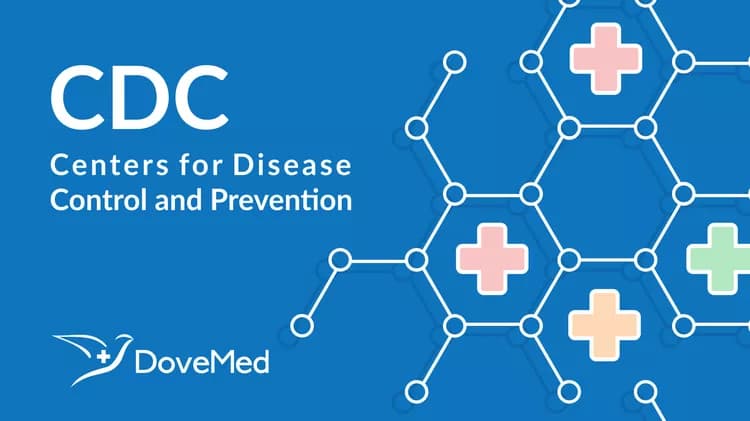
40th Annual Report On The Health Of The Nation Features Long-Term Trends In Health And Health Care Delivery In The United States
CDC today released Health, United States, 2016, the 40th annual report on the health of the nation from the Secretary of Health and Human Services (HHS) to the President and Congress.
This year’s report features a Chartbook on Long-Term Trends in health and health care delivery over the past 40 years. From declines in cigarette smoking and increases in prescription drug use to changes in expenditures for hospitals and home health care, the annual report also explores population changes that have affected patterns of disease, as well as health care access and utilization since 1975. The 27 charts and 114 tables present birth rates and infant mortality, life expectancy and leading causes of death, health risk behaviors, health care utilization and insurance coverage, and health expenditures.
Among the highlights:
Between 1975 and 2015, life expectancy increased for the total population and for males and females. However, between 2014 and 2015, life expectancy declined by 0.1 years for the total population, 0.2 for males, and 0.1 for females.
The infant mortality rate decreased 63 percent, from 16.07 to 5.90 deaths per 1,000 live births between 1975 and 2015.
Between 1975 and 2015, the age-adjusted heart disease death rate decreased 61 percent from 431.2 to 168.5 deaths per 100,000 population. The age-adjusted cancer death rate decreased 21 percent from 200.1 to 158.5 deaths per 100,000 population. Heart disease and cancer remain the top two causes of death in the United States.
Between 1974 and 2015, the age-adjusted prevalence of current cigarette smoking declined from 36.9 percent to 15.6 percent among persons aged 25 and over.
The age-adjusted percentage of adults aged 20 and over with obesity increased steadily from 22.9 percent in 1988–1994 to 37.8 percent in 2013–2014.
Prescription drug use increased for all age groups between 1988-94 and 2013-14. Among adults 65 and over, use of five or more prescription drugs in the past 30 days increased from 13.8 percent to 42.2 percent during the same period.
The percentage of persons with an overnight hospital stay was lower in 2015 than in 1975 for males and females under age 75, and was not significantly different in 2015 than in 1975 for males and females aged 75 and over.
Between 1975 and 2014, the number of community hospital beds per 1,000 resident population fell by almost one-half from 4.6 to 2.5. The average length-of-stay per hospital stay fell by almost one-third from 7.7 to 5.5 days, and occupancy rates declined almost 16 percent from 75.0 percent to 62.8 percent.
Between 1975 and 2015, the share of personal health care expenditures paid for:
Hospital care decreased from 45.3 percent to 38.1 percent;
Physician and clinical services remained the same at about one quarter (22.4 percent–23.4 percent);
Nursing care facilities and continuing care retirement communities decreased from 7.1 percent to 5.8 percent;
Home health care increased from 0.5 percent to 3.3 percent;
Dental services decreased from 7.1 percent to 4.3 percent;
Prescription drugs increased from 7.1 percent to 11.9 percent;
Other types of care increased from 10.6 percent to 13.2 percent.
Between 1978 and September 2016 (preliminary data), the percentage of children under age 18 who were uninsured decreased from 12.0 percent to 5.0 percent; the percentage with Medicaid coverage increased from 11.3 percent to 39.2 percent; and the percentage with private coverage decreased from 75.1 percent to 53.5 percent.
These trends in health and health care have occurred alongside changes in the demographic characteristics of the U.S. population:
The U.S. population grew older between 1975 and 2015 as the number of Americans 65 and over increased from 22.6 million to 47.8 million;
The U.S. population became more diverse; in 1980, 20.1 percent of the population were racial or ethnic minorities; by 2015, 38.4 percent of the population identified as racial or ethnic minorities;
During 1975-2015, the percent of children under age 18 living in poverty reached a high of 22.7 percent in 1993, declined to 16.2 percent in 2000, rose to 22.0 percent in 2010, and then declined to 19.7 percent in 2015;
The rural (nonmetropolitan) share of the population declined between 1970 and 2015; the suburban share of the population increased.
The full report is available at https://www.cdc.gov/nchs/hus/.
Related Articles
Test Your Knowledge
Asked by users
Related Centers
Related Specialties
Related Physicians
Related Procedures
Related Resources
Join DoveHubs
and connect with fellow professionals

0 Comments
Please log in to post a comment.